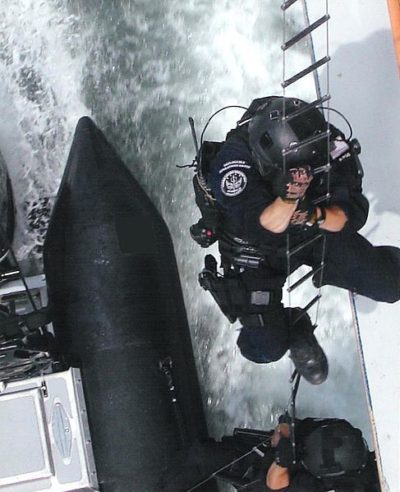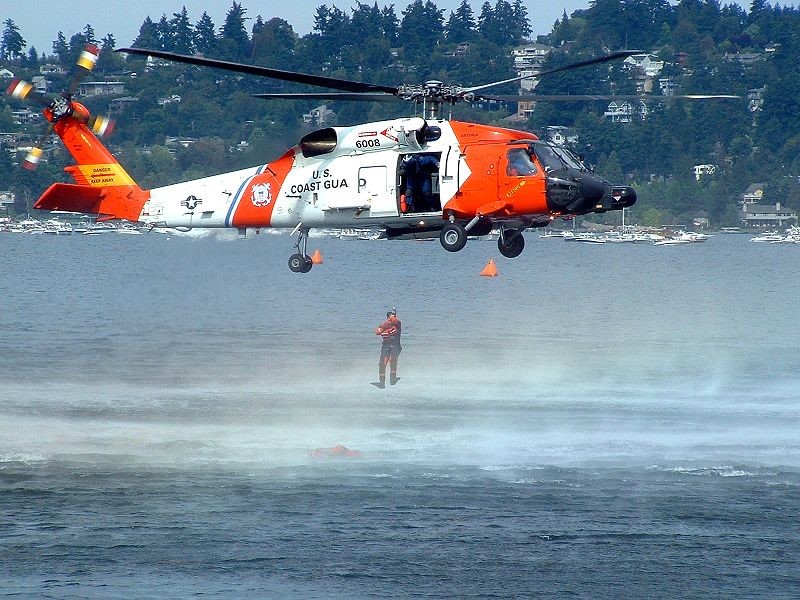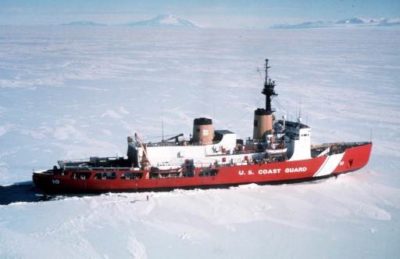Remembering the Fallen of World War II
One of the most searing scenes of the 75th Anniversary of D-Day ceremonies last year was at the Normandy American Cemetery on the bluff overlooking Omaha Beach. Beautiful in its way, the grass in the 172.5 acres so green it might be in a Technicolor movie, the chalk white crosses and Stars of David on the graves — more than 9,380 — lined up in a symmetry that is breathtaking.
Beneath each cross and star lies a fallen serviceman, a G.I. we honor — every day, I hope, but especially on Memorial Day, the day set aside each year to remember the fallen. Rightly so, as the inscription on one marker puts it:
Into the great mosaic of victory
This priceless jewel was set.
So, too, the fallen in the Luxembourg American and Memorial Cemetery — 50.5 acres in Luxembourg, with 5,076 graves — one of the white crosses there marking the final resting place of General George S. Patton, “Old Blood and Guts.” He led his Third Armored Division 100 miles on icy roads in bitter cold weather in December 1944 to break the German encirclement of Bastogne in The Battle of the Bulge.
The deadliest U.S. battle of World War II, fought when the war in Europe was supposed to be over.
The surprise German attack had just started the day I approached the entrance to the Chicago Daily News Building on December 18, 1944, in hopes of getting a job as a copygirl at the Chicago Daily News. The Allied retreats each day, before the eventual advances, made up the headlines my first weeks there. Newspapers were all around me, editions delivered by copyboys coming up from the press room with the latest edition every couple of hours, distributing them to the various news desks and editors. Big black headlines were followed by stories with the details, notably the siege of Bastogne, which the Germans surrounded early on in the fighting.
Because the German attack pushed a long, deep curve in the Allied lines before the tide turned, it came to be known as The Battle of the Bulge. The daily battles, artillery shellings, and tank attacks left those rows of white markers in the Luxembourg American and Memorial Cemetery.
The war in the Pacific was equally costly.
It came into my life the morning of February 1. When I came to work I was told not to report to my usual post at the city desk but to go to a far corner of the city room, a square of four empty desks. On the cleared top was a stack of copy paper, a pair of scissors, a glue pot, and a streamer of Associated Press (AP) copy.
The streamer was not a story but a list of names of the men the Allies had just rescued from a Japanese P.O.W. camp in the Philippines — a military operation so dramatic, daring, and dangerous it came to be known as “The Great Raid.” A raid so dramatic, daring, and dangerous that John Wayne led the rescue mission in the 1945 film Back to Bataan. In a story in the late edition, AP put it this way:
SIXTH RANGER BATTALION CAMP, LUZON — (AP) — There is a long, dusty, twisting land near here which should become a war monument, for today it bridged two worlds. It leads across the plain toward the death camp where 513 prisoners of war were rescued by American Rangers and Filipino guerrillas.
To get the names of the rescued men out to their loved ones as quickly as possible, AP was listing them as they received them, not taking time to put them in alphabetical order. That was what I was to do.
I cut the names of the men apart, long narrow strips, and laid them out on the desk top. When a deadline approached, I reached for the glue pot and made a wide strip down the center of a sheet of copy paper, and stuck the names down. I remember that while they were secure, the glue did not reach the ends … and I can still see those ends curling up.
Copyboys would come for the list for the next edition and regularly bring me a new AP streamer with its list of names.
I finished just after lunch and settled in at my regular post at the city desk, ready to answer calls of “Copy!” and take stories to the copydesk or get clips from the library. And when things grew quiet late in the afternoon, I had time to read the latest edition, just dropped off at a nearby news desk.
Amongst all the happy photos of local families beaming at family pictures of their rescued sons or husbands, boyfriends or brothers, were the first stories about the men and the toll their years in the POW camp had taken.
There were those so weak, emaciated, a Ranger could carry two men on his back. Some limped from beriberi. The legs of some were scored by tropical ulcers and other diseases, and there were those who looked up helplessly from litters.
They talked in low tones of Japanese brutality and the Death March of Bataan, of the final terrifying week of bombing and bombardment that hit Corregidor, of men dying like flies, of disease, of ten hours daily in prison camps, under the hot sun in fields, or waist high in water of rice paddies under hard eyes, of frequent beatings and shootings.
They recalled when 10,000 men at the Cabanatuan prison camp used to spend all day strung out in line for a canteenful of water from one of the camp’s four spigots.
Now, they lined up for a supper of boned chicken, peas, beans, fruit salad, jam and cocoa — a veritable banquet after the starvation fare of the Japanese prison camp.
Invited to ask for more and eat all they want, one of the men said, “Where we come from they put you in the guardhouse if you asked for more.”
It was only with time that I realized each name on those AP streamers — soon a narrow slip of paper on the cleared top of the dark green metal desks — was the name of a man who had not only survived a Japanese POW camp but the Bataan Death March, one of the most horrific episodes of the war. So named because 10,000 of the 76,000 men who had surrendered when Bataan fell to the Japanese died during the five-day, forced march —66 miles in jungle heat to the Japanese prison camps. Some guards took the men’s canteens and emptied them of water so they would have nothing to drink. Others killed, bayoneted, and beat men who tried to get a drink from the gushing artesian wells they passed.
And so, while I don’t remember the names I alphabetized that day, I remember the men whose names were on those narrow slips of paper with the ends curling up — what they endured in their service to their country.
One of the survivors, Glenn Frazier, gave an account of the horrors in the Ken Burns documentary for PBS The War. It appears in the companion book, Frazier saying:
I saw men buried alive. When a guy was bayoneted or shot, lying in the road, and the convoys were coming along, I saw trucks that would just go out of their way to run over the guy in the middle of the road. And likewise the rest of the trucks, and by the time you have fifteen or twenty trucks run over you, you look like a smashed tomato. And I saw people who had their throats cuts because [the Japanese] would take their bayonets and stick them out through the corner of their trucks at night and it would just be high enough to cut their throats. And I saw men beaten with a rifle butt until there just was no more life in them. I saw Filipino women [who tried to bring us food or water] cut. Their stomachs were cut open. Their throats were cut. I saw Filipino and Americans beheaded just with one swipe of a saber.
An officer who’d been keeping track of the cut-off heads he saw as he passed stopped counting at twenty-seven lest he go mad.
Soon the headlines moved on again. This time, to Iwo Jima. The Marines landed there February 19.
The flag raising atop Mount Suribachi as they took control of part of the island would become one of the most famous pictures of World War II, or any war, for that matter. It would win the Pulitzer Prize for AP photographer Joe Rosenthal, go on to become a huge bronze statue — the centerpiece of the United States Marine Corps War Memorial in Arlington, Virginia — and an array of U.S. postage stamps through the years.
Many a headline reported the battle, the progress, the fierce resistance the Marines encountered, before the fighting ended March 26. But it was only when I read the book Flags of Our Fathers by James Bradley, son of one of the flag-raisers, that I fully appreciated what the Marines faced.
“The Marines fought in World War II for forty-three months,” Bradley said. “Yet in one month on Iwo Jima, one third of their total deaths occurred. They left behind the Pacific’s largest cemeteries: nearly 6,800 graves in all, mounds with their crosses and stars.”
Someone chiseled these words outside the cemetery on Iwo Jima:
When you go home
Tell them for us and say
For your tomorrow
We gave our today
Featured image: Marines raising the American flag on Iwo Jima, February 23, 1945 (photo by Joe Rosenthal / public domain)
5 Things You Didn’t Know About the United States Coast Guard
The recent government shutdown caused significant upheaval in dozens of federal agencies. One that felt the full brunt of the impact was the United States Coast Guard. The ripples that the shutdown caused in the service made the news, from the lack of pay for its members after their appropriations ran out in December to the fact that activities considered vital to national security continued in the face of that same lack of pay. However, despite being the oldest continuous seagoing service of the country, many Americans aren’t entirely sure what the United States Coast Guard does. Some think of it as a military branch, while others consider it an arm of law enforcement. In fact, it’s both, and a regulatory agency, and quite a bit more. Here are five things you probably didn’t know about the United States Coast Guard.
1. It’s a Military Branch
Created by the Congress in 1790 after a request by Alexander Hamilton, the U.S. Coast Guard is defined as a volunteer branch of the United States Armed Forces. It’s one of seven federal uniformed services, with the others being the U.S. Army, the U.S. Navy, the U.S. Air Force, the U.S. Marine Corps, the U.S. Public Health Service Commissioned Corps, and the National Oceanic and Atmospheric Administration Commissioned Officer Corps; only the Army, Navy, Air Force, Marines, and Coast Guard as considered the “armed forces.” Since 2002, the Coast Guard has operated out of the Department of Homeland Security. Prior to that, it fell under the Department of Transportation from 1967 to 2002. Its original home was the Department of the Treasury. During wartime, the Guard can be transferred to the Department of the Navy by the president or Congress. It’s happened twice, once in each World War.
2. It Does Have a Law Enforcement Directive

While members of the Coast Guard are considered to be in military service (either active or reserve), and their pay works in the same way that other military pay grades work, they are also charged with tasks that place them on a maritime law enforcement beat. Officially, the Coast Guard has 11 missions dating from the Homeland Security Act of 2002:
- Ports, Waterways & Coastal Security
- Drug Interdiction
- Aids to Navigation (ATON: including maintaining the nation’s lighthouses, buoys & VTS; also legacy ATON missions including lightships & LORAN)
- Search & Rescue (SAR)
- Living Marine Resources
- Marine Safety
- Defense Readiness (National Security & Military Preparedness)
- Migrant Interdiction
- Maritime Environmental Protection
- Polar, Ice & Alaska Operations (including the International Ice Patrol)
- Law Enforcement (including Prohibition Enforcement History)
The Coast Guard’s stewardship of ports and waterways ties in directly with their drug interdiction mission — they work to stem the flow of illegal drugs from entering the country. In 2016 alone, the U.S.C.G. arrested 585 suspected drug smugglers and seized over 416,000 pounds of cocaine. Migrant interdiction seeks to prevent illegal immigrants from entering the country over the waters; during the course of 2018, the Coast Guard captured more than 1,000 people trying to enter illegally off the southern California coast.
3. Their Motto Means “Always Ready”
While the Marines’ Semper Fidelis (Always Faithful) is more famous, the Coast Guard’s motto of Semper Paratus reflects their status as an organization that’s regarded as a first responder. The Coast Guard is frequently associated with Search & Rescue (which is one of their 11 missions, but also a hallmark of their excellence in that field).
4. Coast Guard Search & Rescue Is Everywhere

As part of their commitment to readiness for SAR operations in their nine service districts, the Coast Guard has SAR facilities on the East, West and Gulf coasts of the continental United States. Other facilities exist in Alaska and Hawaii, as well as on the Great Lakes and inland waterways. U.S. territories Guam and Puerto Rico also house operation centers. The Coast Guard and the Air Force both send select officers to teach at the National Search and Rescue School at Yorktown, Virginia; the school trains all SAR mission planners and staff. Rescues are facilitated out of a variety of vehicles, notably helicopters and cutters.
Becoming a Coast Guard Rescue Swimmer is one of the most difficult achievements in the U.S. Armed Forces. You basically have to be a champion swimmer (able to handle at least 30 minutes of rough ocean) and an EMT (certified) at the same time. More than 50% of applicants wash out. There’s also a required physical training test each month after you’ve made it; according to Military.com, the test consists of “push-ups, situps, pull-ups, chin-ups, 12-minute crawl swim (500-yard minimum), 25-yard underwater swim and a 200-yard buddy tow.”
The trailer for The Finest Hours.
One of the most famous Coast Guard rescues was documented in the 2016 film The Finest Hours. On February 18, 1952, two different ships had been ripped in half during a nor’easter off the coast of Massachusetts. The first vessel attracted a number of rescue crews, so when the second vessel, the oil tanker SS Pendleton, was damaged, few were left to assist. Petty Officer and coxswain Bernie Webber took a crew of three on an attempt to save the 33 survivors trapped aboard the Pendleton amid raging wind and waves; remarkably, they were able to rescue 32 of the stranded sailors. Webber and the rest of his crew were each awarded the Gold Lifesaving Medal, a rarity since the accolade usually goes to the captain only.
5. They Break the Ice and Protect Marine Life

Among the Coast Guard’s lesser known operations are their “Ice” missions and environmental protection. In the U.S., the Coast Guard deploys vessels to break up ice in waterways like the Great Lakes in order to protect ships. Outside the country, they run U.S.-flagged heavy icebreakers in the polar regions for the same purpose.
On the environmental side, the Coast Guard works with a number of watchdog organizations to keep the waters clean. They cooperate on stopping the spread of invasive species, preventing ocean dumping, and dealing with chemical and oil spills. They also have a directive to defend protected marine life and prevent unauthorized fishing incursions in the waters defined as the U.S. Exclusive Economic Zone.
Feature Image: A U.S. Coast Guard helicopter during rescue operations surrounding the Deepwater Horizon disaster in 2010. (Photo from U.S.C.G. via Wikimedia Commons)